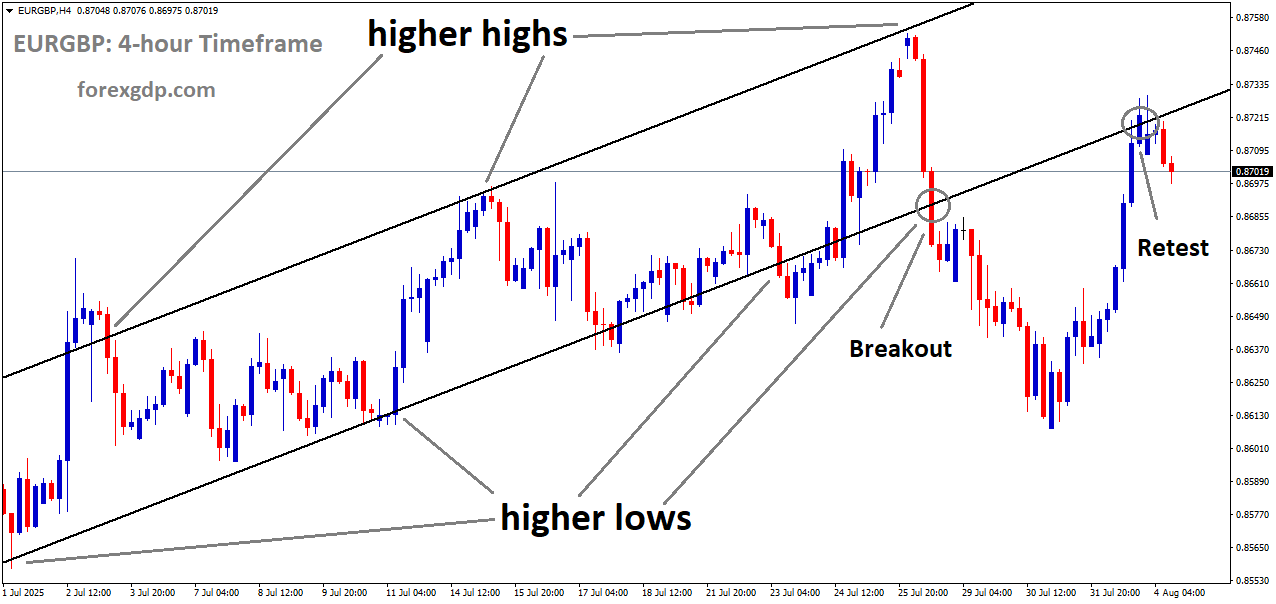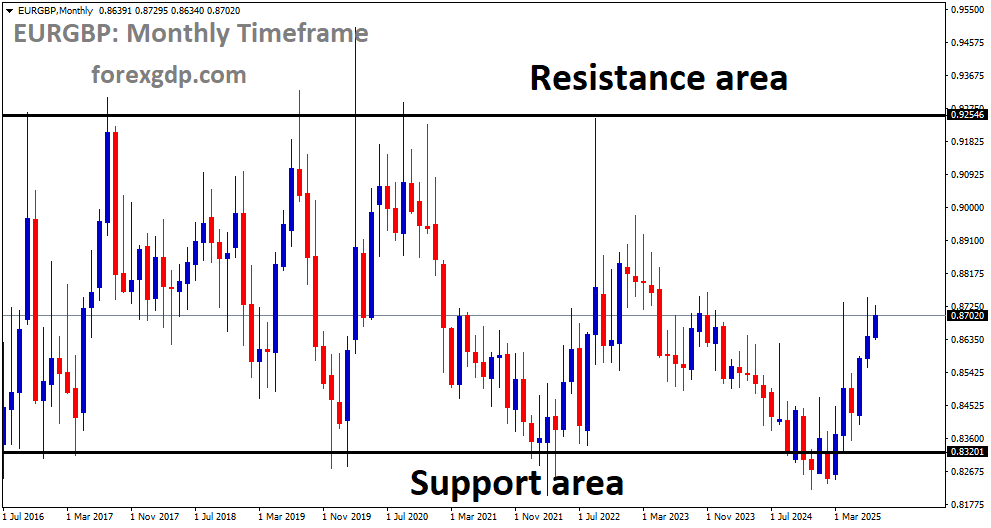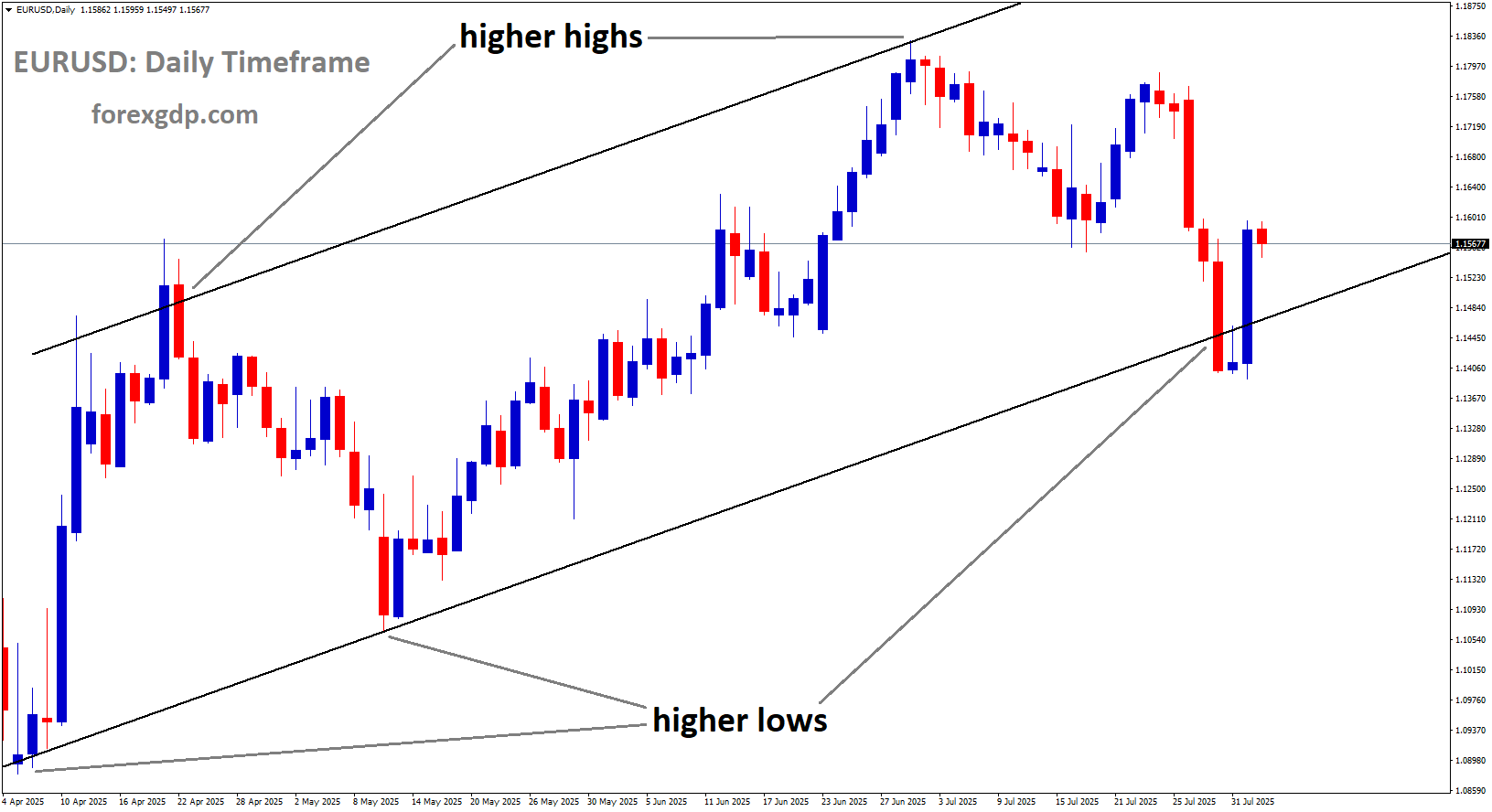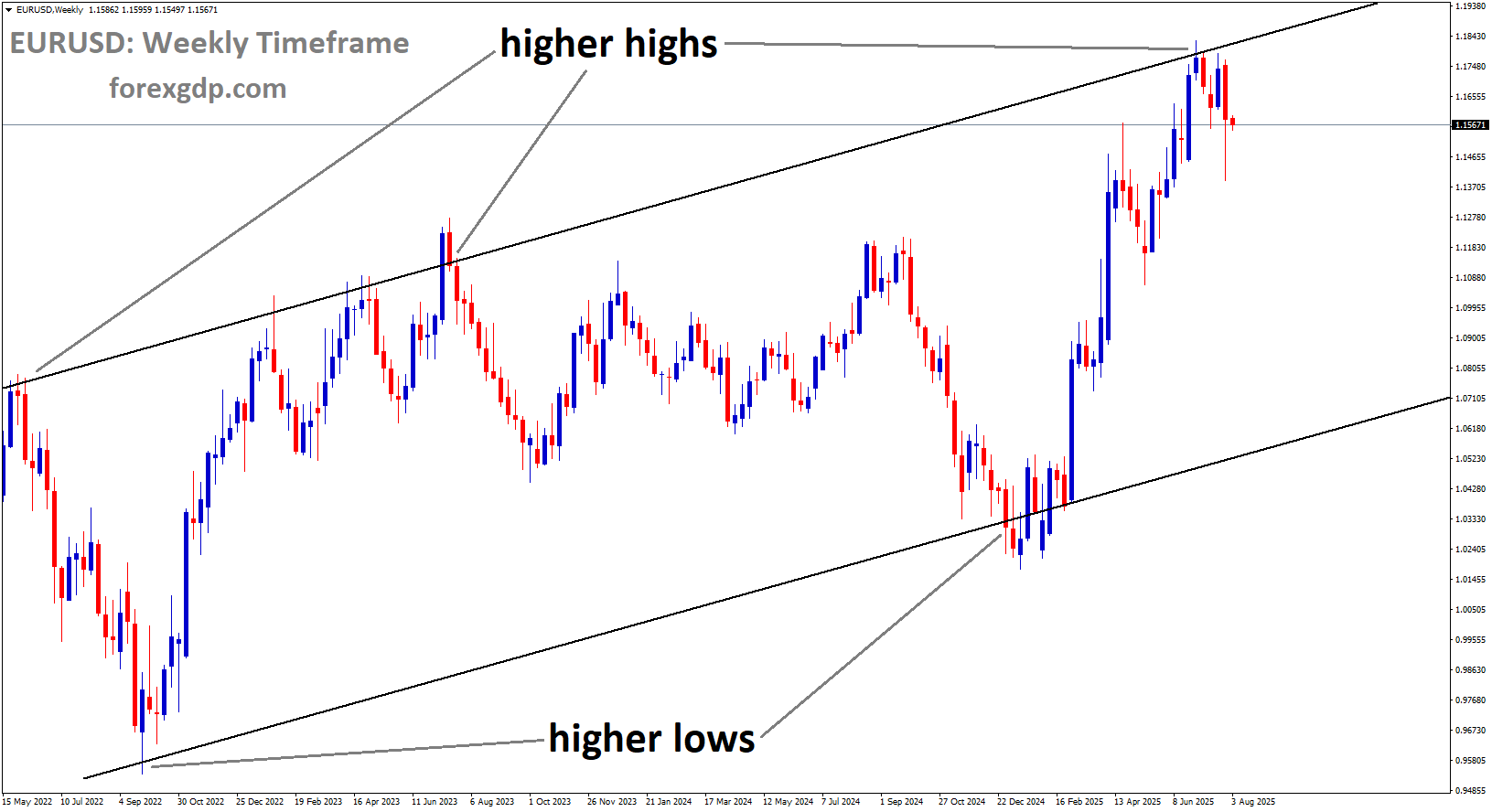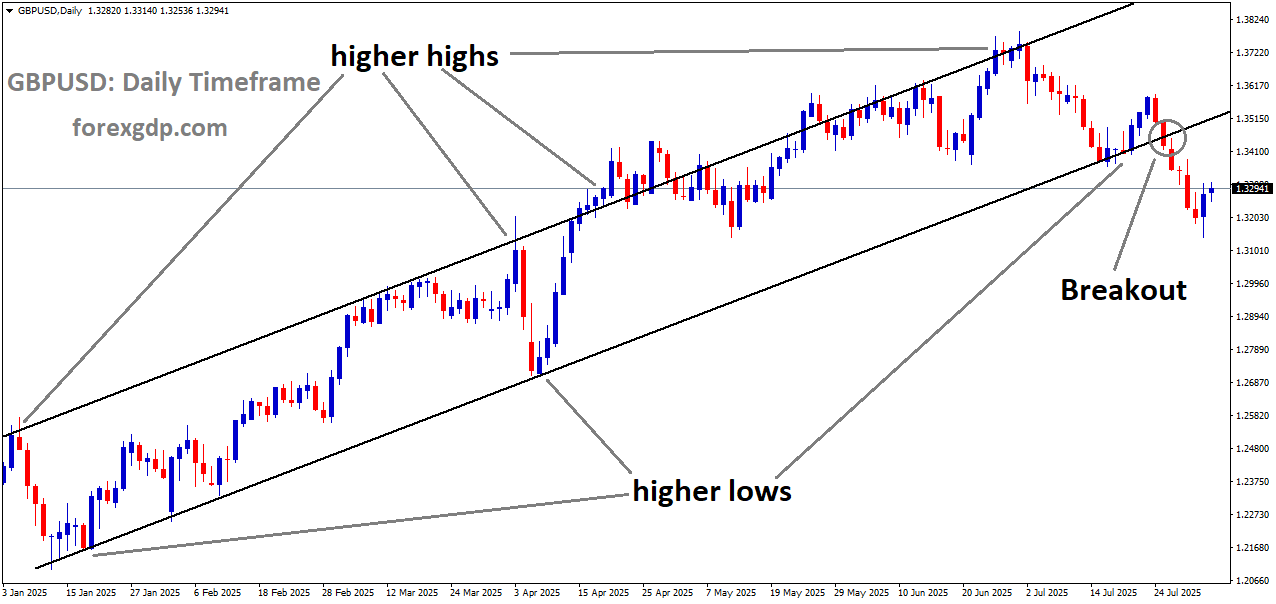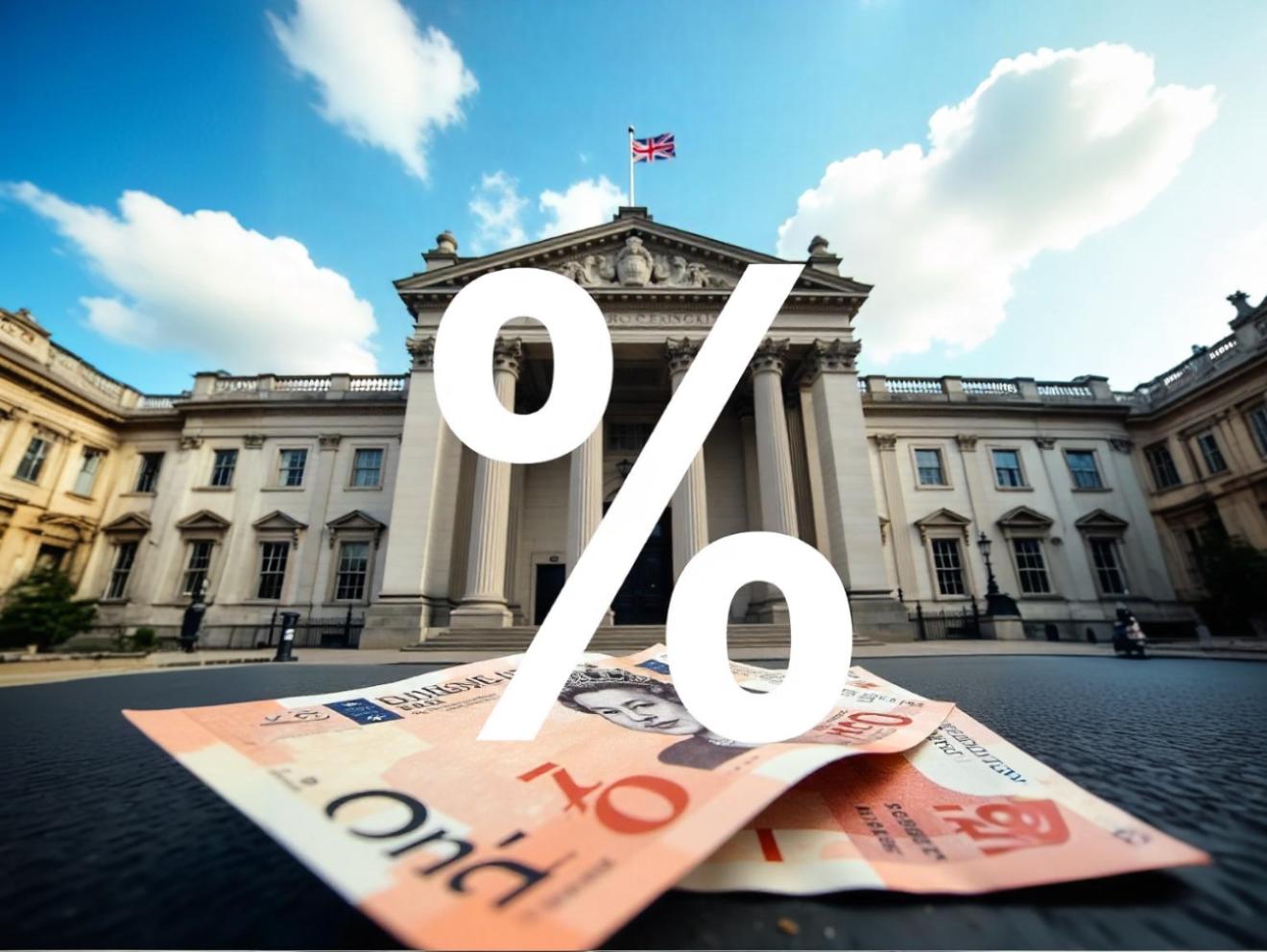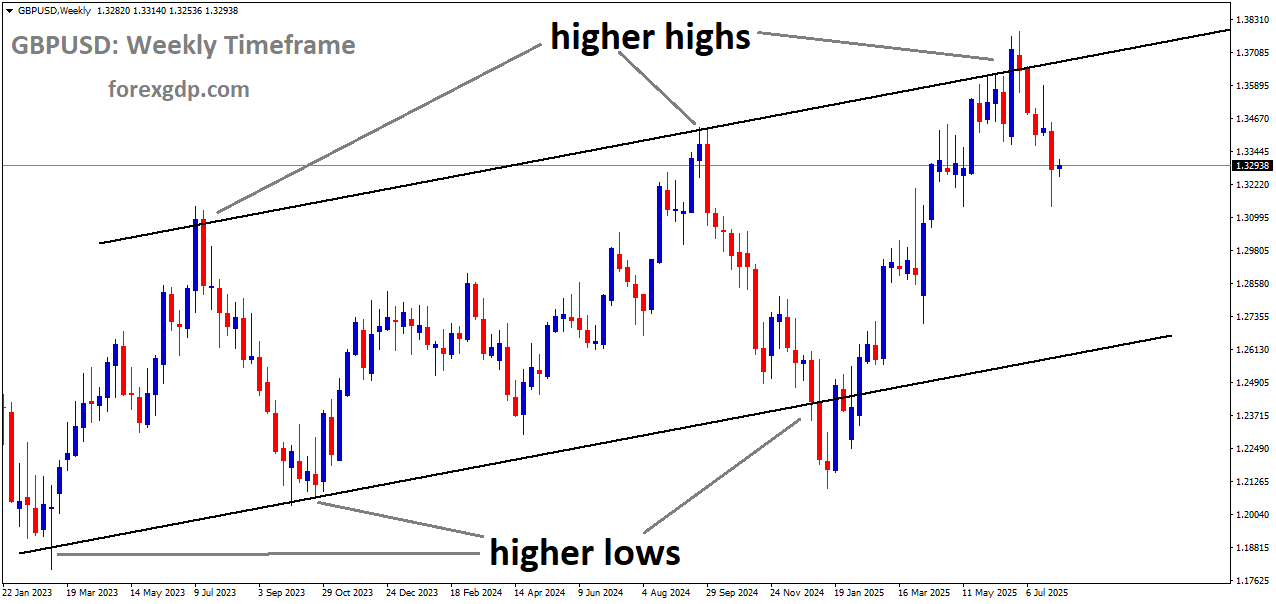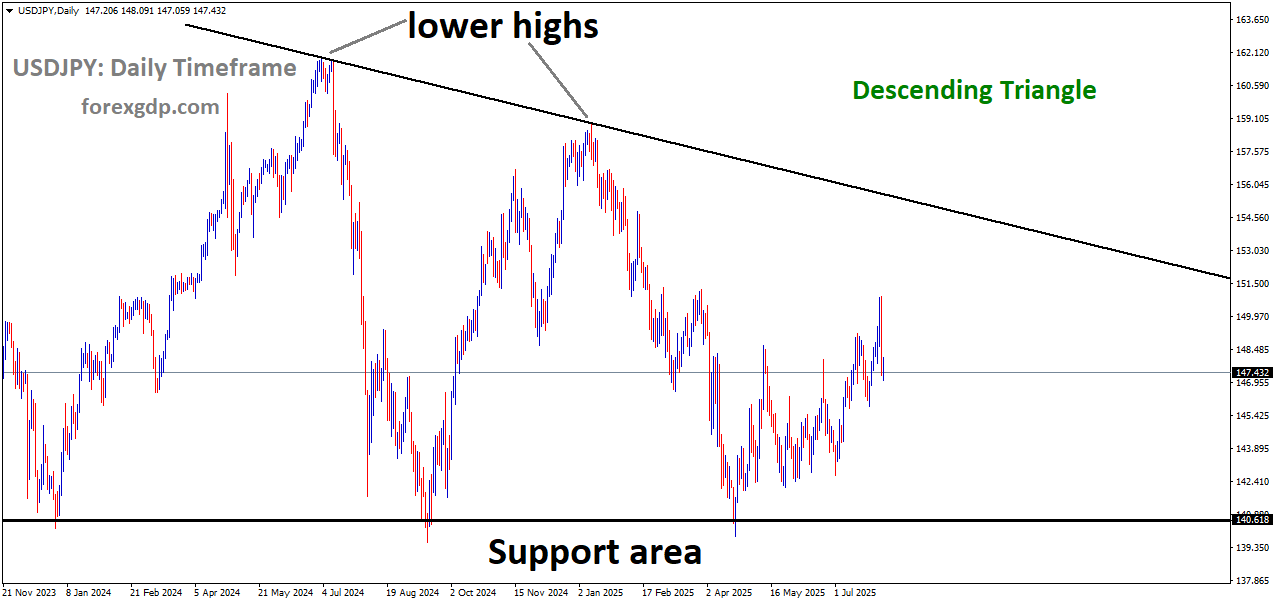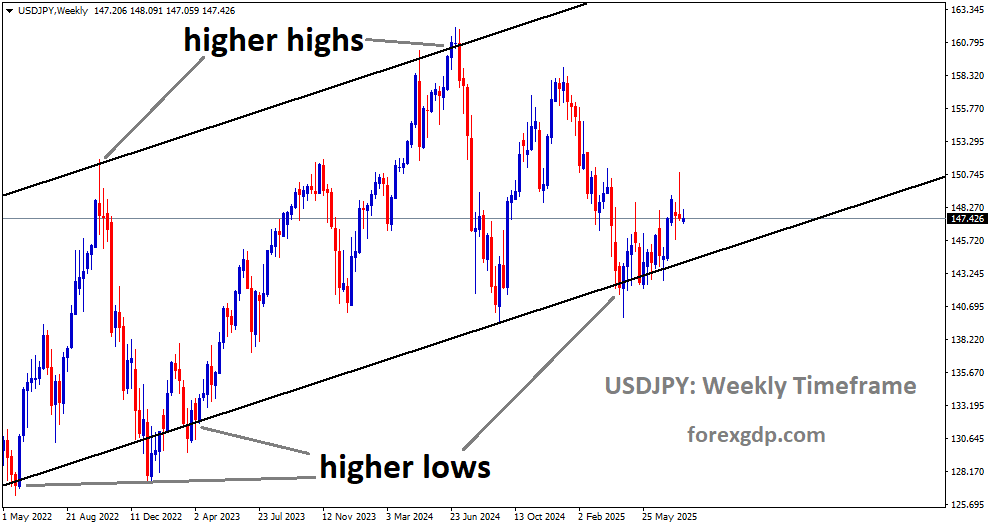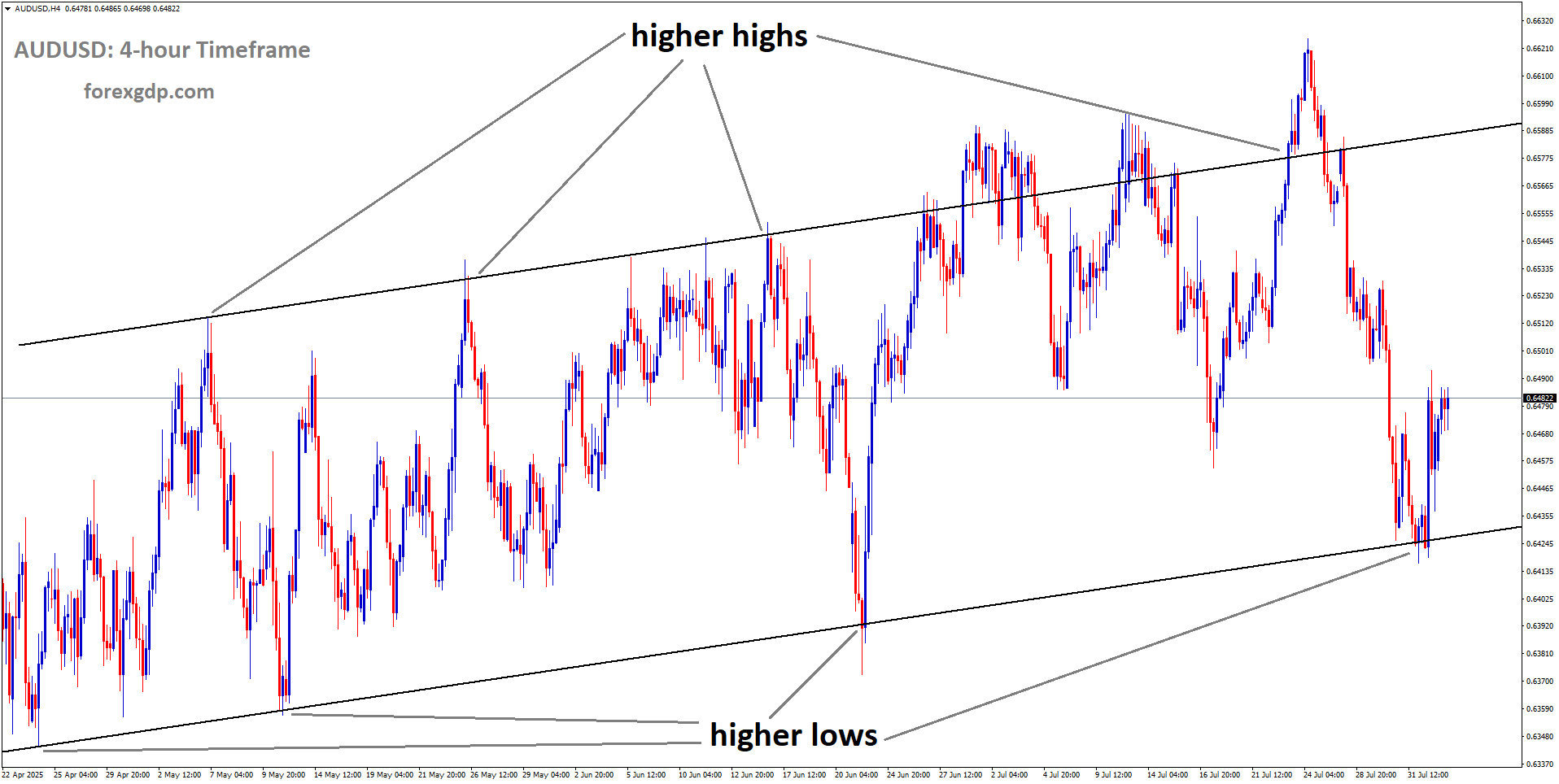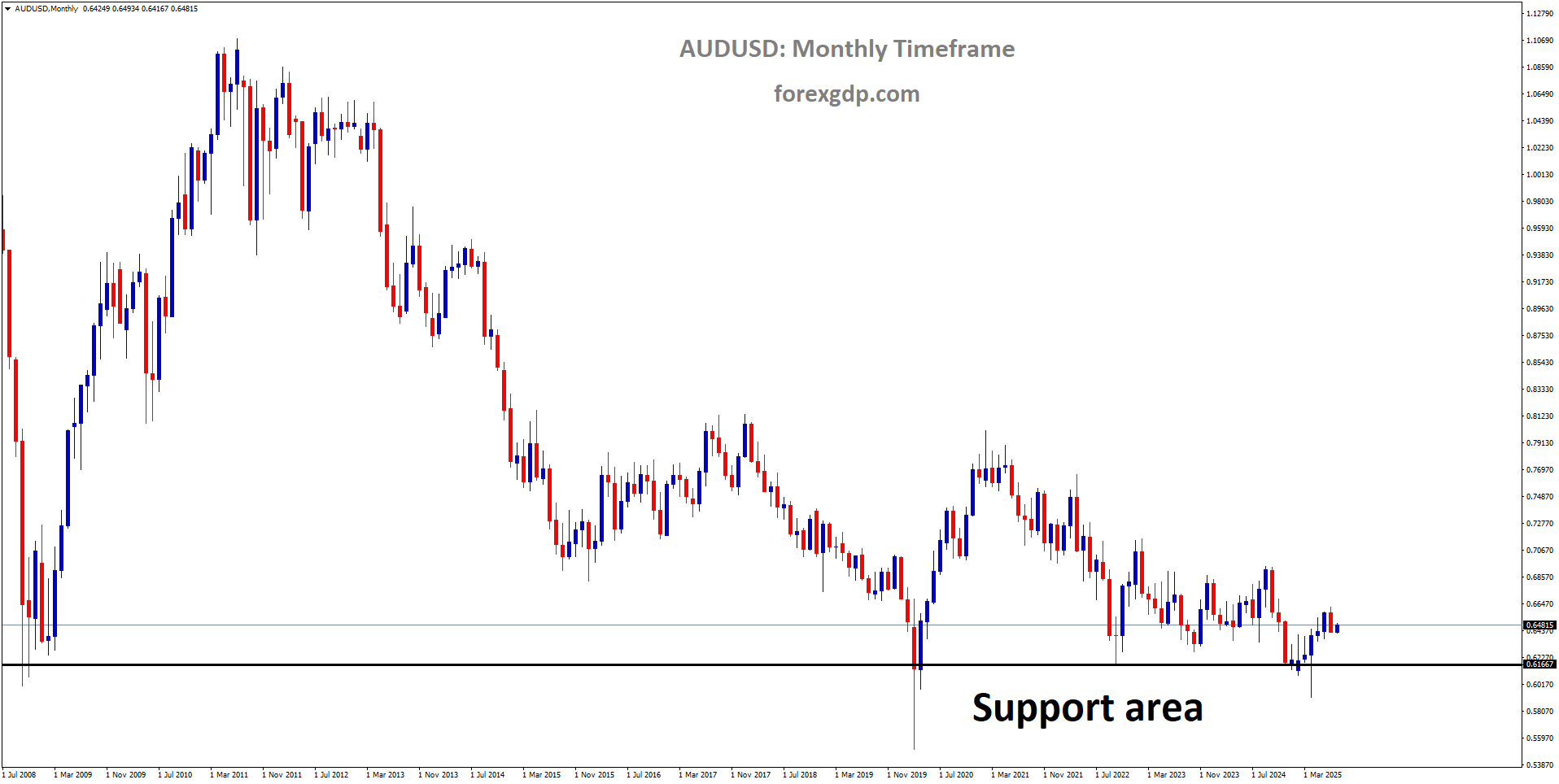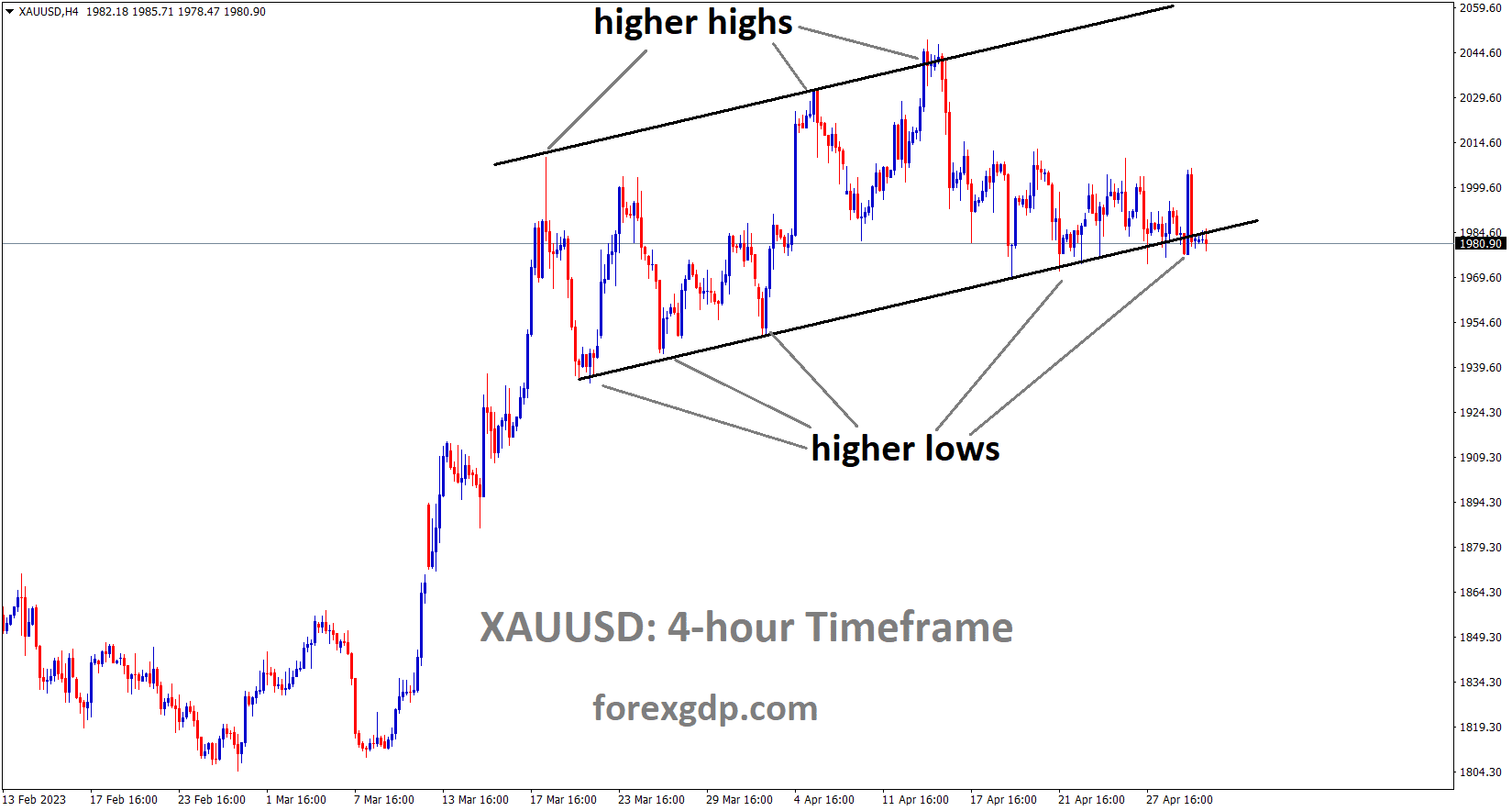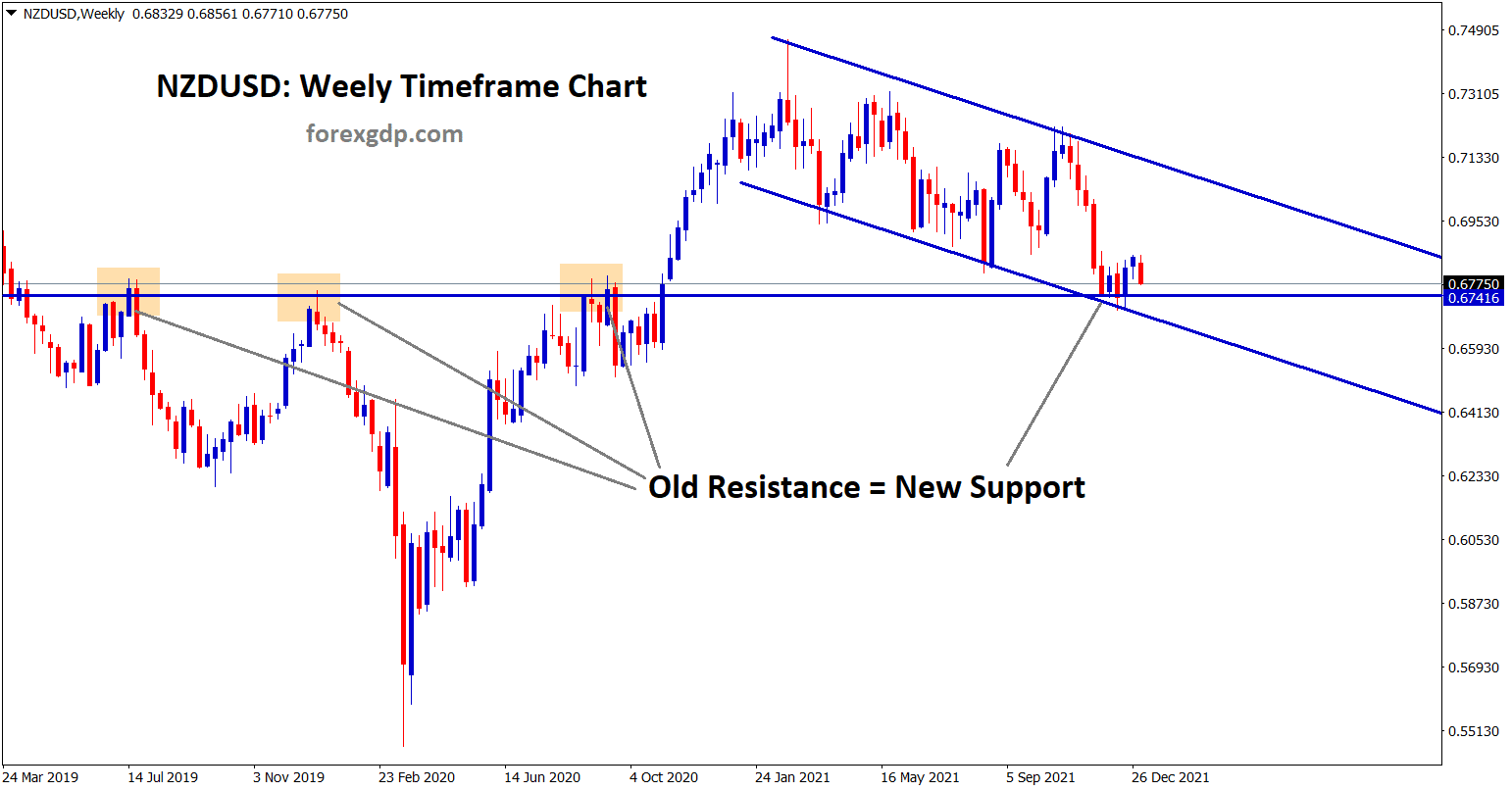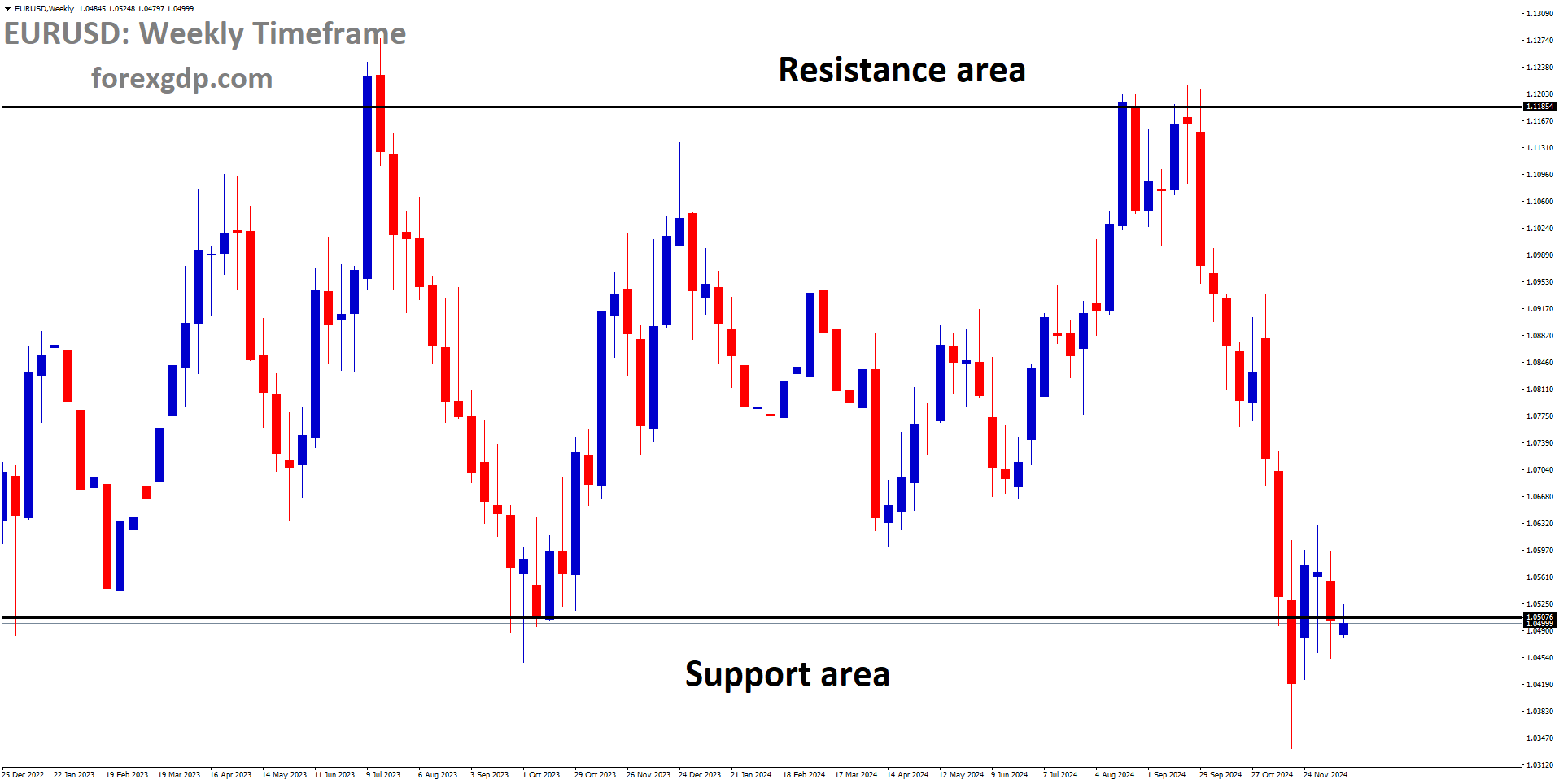EURGBP reached the retest area of the broken uptrend channel
Daily Forex Trade Setups Aug 04, 2025
Stay on top of market trends with our Daily Forex Trade Setups (Aug 04, 2025)
EURGBP Dips as Interest Rate Speculation Heats Up Before BoE
The EUR/GBP pair isn’t usually the flashiest in the forex world, but recently, it’s been getting some well-deserved attention. If you’ve been wondering what’s going on behind the scenes with this currency pair, you’re in the right place. Let’s break it all down in simple terms, without the boring charts or technical jargon.
The BoE’s Big Decision: Why Traders Are Holding Their Breath
When central banks make a move, the markets listen — closely. And right now, all eyes are on the Bank of England (BoE).
The Rate Cut Buzz
There’s a strong belief that the BoE is gearing up to cut interest rates. The buzz is that they’ll likely go for a 0.25% cut, bringing the rate down to 4.0%. This is largely in response to softer economic data coming out of the UK. Weak growth, rising borrowing costs, and persistent inflation above their target level are all putting pressure on the bank to act.
Now, when a central bank cuts rates, it usually weakens the country’s currency. That’s because lower rates tend to reduce foreign investment, which means less demand for the currency. In this case, if the BoE does follow through with the cut, it could make the British Pound (GBP) a little less attractive compared to the Euro.
What Happens Next?
Market players aren’t just expecting one rate cut. They’re thinking this might be the start of a broader easing cycle. Predictions suggest there could be at least two more rate cuts on the horizon, which could drag the rate down to 3.5% by next summer.
That’s a pretty dovish stance, and if the BoE reinforces that outlook with softer commentary, it could trigger more weakness in the Pound — giving the Euro an edge in this currency pairing.
Eurozone’s Inflation Data Throws a Curveball
On the other side of the channel, the Euro is trying to hold its ground. And a big part of that comes down to inflation.
No Rate Cuts Just Yet
You might have expected the European Central Bank (ECB) to think about cutting rates too, especially with all the economic uncertainty out there. But the latest inflation numbers say otherwise.
Data from July shows that both the headline and core inflation figures ticked up slightly — 2.0% and 2.2% year-on-year, respectively. These numbers were a bit higher than expected, and that’s a big deal.
Why? Because if inflation is still hanging around higher levels, the ECB doesn’t have much room to start slashing rates. Doing so could risk inflation picking up even more. So instead of easing, the ECB might just stay on hold for a while, keeping rates steady and the Euro relatively supported.
What It Means for EUR/GBP
So, we have the BoE potentially moving toward rate cuts, while the ECB is likely standing firm. That creates a contrast that naturally shifts momentum in favor of the Euro — at least for now. This could help explain why EUR/GBP has been showing some strength recently.
Trade Talk Drama: The US, The EU, and the Ripple Effects
Just when you think currency markets are only about interest rates and inflation, geopolitics jumps in to stir the pot.
US Tariffs Shake Things Up
Recently, the United States decided to impose a 15% tariff ceiling on several European exports — including cars, chips, medicines, and more. While this might sound harsh, it was actually a step back from earlier threats of much higher tariffs, which could’ve gone beyond 30%.
So, in the bigger picture, this move was seen as a way to cool tensions and avoid a full-on trade war. That’s a relief not just for businesses, but also for the Euro. It sent a signal that Europe may avoid deeper economic trouble that could have resulted from a bigger tariff hit.
But Wait, There’s a Catch
This isn’t a happily-ever-after moment. If tensions flare up again or new tariff threats come into play, it could throw a wrench into things. In that case, we might see investors getting nervous about the Euro’s future and possibly turning back to the Pound or other safer options.
So while the recent decision was a step in the right direction, it’s something to keep a close eye on. One wrong move from either side could shift market sentiment quickly.
EURGBP is moving in a box pattern, and the market has rebounded from the support area of the pattern
What Traders Should Watch Moving Forward
If you’re trading or just keeping an eye on EUR/GBP, here’s what really matters now:
-
Bank of England’s Rate Decision: This could be the single biggest factor driving GBP moves this week. A rate cut and dovish commentary would likely weaken the Pound.
-
ECB’s Next Move: Any signs that the ECB might change course and consider easing could shift things again. But for now, stable inflation data is working in the Euro’s favor.
-
US-EU Trade Relations: Smooth negotiations will support the Euro. Any sudden tensions or policy shifts could change the story fast.
-
Market Sentiment and Economic Reports: UK growth numbers, employment data, or surprise inflation stats could all impact how traders position themselves.
Final Summary: EUR/GBP Could Be Heading for a Shift — Here’s Why
Right now, we’re seeing a subtle but meaningful change in the EUR/GBP pair. While the British Pound is under pressure due to expectations of upcoming interest rate cuts, the Euro is holding its ground thanks to firm inflation and a relatively steady ECB.
Add in easing trade tensions with the US and you get a Euro that’s showing a bit more resilience than before. Of course, this could change in the blink of an eye if central banks shift their tone or if new trade developments arise.
But for now, it looks like the EUR/GBP is leaning slightly in favor of the Euro — at least in the short term.
Whether you’re trading this pair or just trying to stay informed, the key takeaway is simple: Keep your eyes on central bank policies, inflation trends, and international news. Those are the forces shaping the EUR/GBP outlook right now.
EURUSD Edges Down with US Employment Shock Losing Impact
If you’ve been keeping an eye on the EUR/USD currency pair lately, you’ve probably noticed some unusual movement. After a strong rebound on Friday, the Euro took a bit of a breather at the start of the week. But what exactly is driving all this back-and-forth action?
Let’s dive in and unpack what’s happening behind the scenes — without getting too technical or bogged down in confusing jargon. We’ll keep things simple, detailed, and straight to the point so you can get a better grip on the broader picture.
EURUSD is moving in an Ascending channel, and the market has reached the higher low area of the channel
Why Did the Euro Jump on Friday?
Friday was a huge day for the Euro, all thanks to a surprising twist in the US labor market.
US Jobs Numbers Fell Short
Every month, the US government releases what’s called the Nonfarm Payrolls (NFP) report. This data shows how many new jobs were added to the economy. It’s a big deal because it tells us whether the economy is growing or slowing down.
This time around, the numbers came in way lower than expected. Instead of 110,000 new jobs, there were only 73,000 added in July. To make things worse, job numbers from the past two months were also revised down by over 250,000.
That’s not just a miss — that’s a major red flag.
Why It Matters
When job growth stalls, it usually means the economy might be heading into tough times. Fewer jobs can lead to lower spending, weaker business growth, and ultimately, a possible recession.
So how does this tie into the Euro? Well, when the US economy shows signs of slowing, investors start expecting the Federal Reserve (the US central bank) to cut interest rates to give the economy a boost. Lower interest rates generally weaken the Dollar — and that gives other currencies, like the Euro, a chance to shine.
Political Drama in the US Adds Fuel to the Fire
As if the disappointing jobs report wasn’t enough, there was even more drama in the background that added pressure on the US Dollar.
White House Shake-Up
Right after the jobs numbers were released, President Donald Trump made headlines again — this time by firing the commissioner of the Bureau of Labor Statistics. He accused her of manipulating the data to make him look bad.
That sudden move sent a wave of uncertainty through the markets. When political leaders appear to interfere with economic data, confidence takes a hit. And investors hate uncertainty. It makes them nervous and drives them away from the Dollar.
Changes at the Federal Reserve
On top of that, Fed Governor Adriana Kugler announced her resignation, effective August 8. That opens the door for Trump to appoint someone more supportive of his push for lower interest rates. The prospect of a more dovish Fed (meaning they’re likely to cut rates) only made the Dollar weaker and lifted the Euro higher.
What’s Ahead This Week? A Calm Before the Storm?
So far, this week has been a lot quieter in terms of major news. That might sound boring, but it’s actually a chance for the market to catch its breath and prepare for what’s next.
What to Watch
On Monday, there were a couple of smaller economic reports on the radar. In Europe, investors looked at the Sentix Economic Confidence Index, which offers a snapshot of how optimistic investors feel about the Eurozone economy.
In the US, factory orders data was released. Analysts expected a noticeable decline — another sign that the economy could be losing steam. If more weak data continues to roll in from the US, it’ll likely increase expectations that the Fed will step in with a rate cut.
And when that happens? You guessed it — the Dollar could fall even more, and the Euro might keep climbing.
Market Sentiment: What Are Investors Thinking Right Now?
At this point, investors are playing a bit of a guessing game. Everyone’s trying to figure out what the Federal Reserve will do next, and when.
Rate Cut Bets Surge
Before Friday’s report, not many traders were betting on a rate cut in September. But after seeing how bad the job numbers were — and how quickly things seemed to shift politically — those bets jumped dramatically. Now, roughly 80% of investors think a rate cut is coming in September, and many are expecting another cut before the end of the year.
This kind of shift in expectations happens fast, and it plays a huge role in how currencies move. As long as the market believes the Fed is gearing up to lower rates, the Dollar will remain under pressure.
EURUSD is moving in an Ascending channel, and the market has fallen from the higher high area of the channel
Still Some Doubts at the Fed
Not everyone at the Federal Reserve is ready to jump on the rate-cut train, though. Raphael Bostic, President of the Atlanta Fed, admitted that the weak jobs report puts the Fed in a tricky spot. But he also reminded everyone that inflation is still a concern. That means the Fed might be cautious about cutting rates too quickly, in case it leads to a spike in prices.
So while the odds of a cut are rising, nothing’s guaranteed — and that’s keeping investors on their toes.
Final Summary: What This Means for the Euro and the Dollar
In simple terms, last week’s ugly jobs report in the US has shaken up market expectations in a big way. Investors are suddenly more convinced that the Federal Reserve will cut interest rates soon, which has pushed the Dollar lower and helped the Euro rise.
But things are still uncertain. Political tensions in the US, changes at the Fed, and ongoing economic data releases will continue to shape how both currencies move. For now, the Euro is holding on to most of its gains, while traders keep a close eye on every bit of news that could shift the balance again.
So if you’re watching EUR/USD, now’s a good time to stay alert. We’re in a market that’s moving more on headlines and big picture shifts than on technical charts. Keep your ear to the ground, and don’t be surprised if the ride stays a little bumpy for a while.
GBPUSD Gains Ground as Market Eyes Soften Fed Stance on Interest Rates
When it comes to currency movements, things can shift fast — and the recent surge in the Pound Sterling (GBP) against the US Dollar (USD) is a perfect example. But what’s behind this sudden strength in the pound? Is it all about the numbers, or are there deeper factors driving the change?
Let’s break it all down in plain terms — no charts, no complicated jargon. Just the real reasons why the British Pound is holding strong, what’s happening with the US economy, and what we can expect from the Bank of England (BoE).
The US Jobs Report: A Major Plot Twist
One of the biggest catalysts for the pound’s upward move came from the US side of things — specifically, the July jobs report. It didn’t deliver the strong results that analysts were expecting.
GBPUSD has broken the Ascending channel on the downside
Why the Jobs Data Matters
The US economy added only 73,000 new jobs in July, falling far short of the expected 110,000. This weaker-than-expected growth has created a ripple effect across financial markets. Investors now believe the US labor market might be cooling off more quickly than previously thought. That’s a big deal because the strength of the job market influences how the US Federal Reserve (the Fed) makes its interest rate decisions.
When job creation slows down, it can be a sign that the economy needs a bit of support — and that usually means the Fed might consider cutting interest rates to help boost activity.
What This Means for the Dollar
Lower interest rates typically weaken a currency because they reduce returns for investors holding that currency. So, when markets started betting that the Fed could cut rates as early as September, the US Dollar started to lose its momentum. Naturally, this opened the door for other major currencies like the Pound Sterling to gain some ground.
Change in the Fed: Another Layer of Uncertainty
There’s another piece to this puzzle — a leadership shake-up at the Federal Reserve. Fed Governor Adriana Kugler stepped down, and President Trump is expected to appoint someone aligned with his economic stance.
That’s important because any new decision-maker could lean more toward rate cuts, especially if their goal is to encourage more growth heading into the next election cycle. Investors are watching this closely, as a more accommodative Fed could speed up the timeline for rate cuts.
Spotlight on the UK: All Eyes on the Bank of England
Now, let’s switch gears and talk about the UK. While the Pound’s strength is partially due to weakness in the Dollar, it’s also about what’s happening on the British side of the story.
Is the Bank of England About to Cut Rates?
The BoE is meeting this week, and the markets are buzzing with expectations. Most traders are betting on a rate cut, likely a 0.25% reduction. That sounds simple, but there’s a lot of debate about how the BoE will handle it.
On one hand, inflation is still hanging around uncomfortably high levels. On the other hand, the UK job market is showing signs of slowing down — not unlike what’s happening in the US.
The BoE is now walking a tightrope. Cut rates too soon, and inflation could come roaring back. Wait too long, and the slowing economy could take a hit. So, while a rate cut seems likely, how the BoE frames its future guidance will be just as important.
What Are Investors Watching This Week?
Aside from the BoE meeting, there are a few more events worth keeping on the radar:
-
UK Services PMI (Purchasing Managers’ Index): This shows how the services sector — which includes things like finance, health care, and hospitality — is performing. The initial reading suggested slow but steady growth. If that holds in the final release, it might boost confidence in the economy.
-
US Services PMI: This also comes out this week and will offer clues about how well the US economy is holding up, especially in the wake of that disappointing jobs report.
Another Shockwave: US Data Credibility in Question
Adding more fuel to the fire, President Trump made headlines by firing the head of the Bureau of Labor Statistics, Erika McEntarfer. His reason? Allegedly “faking job numbers” in the recent report.
GBPUSD is moving in an Ascending channel, and the market has fallen from the higher high area of the channel
That move has shaken investor confidence. After all, if the government itself is questioning the accuracy of its official data, how can markets know what to believe? This uncertainty has created further downward pressure on the US Dollar, giving the Pound even more room to shine.
The Bigger Picture: What It All Means for You
So, where does this all leave us?
The Pound is climbing not just because the UK is doing particularly well, but because the US is showing some cracks in its economic armor. A weaker Dollar gives other currencies room to breathe, and that’s what’s happening here.
At the same time, traders and investors are trying to figure out what the Bank of England will do next. Even if a rate cut happens, it’s the tone of the message that will really drive market direction.
And then there’s the uncertainty in the US — both economic and political. Any shift in leadership or policy at the Fed could have a huge impact on currencies. With all this in motion, volatility is likely to continue, and sharp moves in currency pairs like GBP/USD might become the norm for a while.
Final Summary
The recent strength in the Pound Sterling against the US Dollar isn’t just a short-term reaction — it’s the result of several big changes happening all at once. A disappointing US jobs report has raised real questions about the strength of the American economy and increased the odds of an interest rate cut from the Fed. Meanwhile, political shakeups have added more uncertainty, putting pressure on the Dollar.
Over in the UK, the focus is now on the Bank of England’s upcoming decision. Even though a rate cut is expected, how the BoE positions itself for the rest of the year will be key to where the Pound goes next.
In the end, it’s a fascinating moment in the currency markets — and whether you’re a trader, investor, or just someone curious about global finance, it’s definitely worth paying attention to what happens next.
USDJPY Slows Its Climb as Markets Brace for Potential Fed Cuts
If you’ve been keeping an eye on currency markets lately, you’ve probably noticed something unusual — the US Dollar has been wobbling, and even the Japanese Yen isn’t taking full advantage of it. After a rollercoaster ride last week, where the Dollar dropped sharply, we’re now seeing a bit of a rebound. But let’s not get ahead of ourselves — this bounce is looking pretty limited.
A big part of the story starts with the recent US jobs report. It wasn’t what investors were expecting. Instead of showing a strong, resilient labor market, the numbers came in weak, and previous months were revised down too. That’s got traders and economists rethinking everything — especially when it comes to what the Federal Reserve might do next with interest rates.
USDJPY is moving in a descending triangle pattern, and the market has rebounded from the support area of the pattern
The market is now leaning heavily toward the idea that the Fed will start cutting rates soon. And as anyone familiar with currency markets knows, lower interest rates tend to weaken the Dollar. That’s exactly what’s happening here.
Why Are Rate Cuts Such a Big Deal for the Dollar?
Rate cuts can change the entire mood of the market. When the Fed raises rates, it usually means the economy is strong, and the Dollar benefits because investors get a better return for holding Dollar-based assets. But when the Fed starts talking about rate cuts, it’s often a sign of slowing growth or rising economic risks. That’s not great news for the currency.
Right now, futures markets are showing more than an 80% chance that the Fed will cut interest rates by a quarter point in the coming months. That’s a massive shift from just a few days ago, when the odds were much lower.
The Fed’s Changing Team
There’s another twist to this story. One of the Fed’s top decision-makers, Adriana Kugler, just resigned. She was known for supporting tighter monetary policies — meaning she didn’t shy away from higher interest rates. Her departure gives US President Donald Trump the chance to bring in someone who might favor easier money policies — possibly adding even more weight to the idea that rate cuts are coming.
This kind of shift in leadership can have a ripple effect on expectations, especially in the currency markets. When traders sense that the Fed might take a softer stance, they often respond by selling Dollars.
Japan’s Side of the Story: Why Isn’t the Yen Gaining Ground?
You might think that a weaker Dollar would automatically mean a stronger Yen — after all, they’re often seen as mirror images in the currency world. But the Yen isn’t really rallying. In fact, it’s not doing much at all.
That’s largely because of the Bank of Japan (BoJ). Last week, the BoJ made some comments that left everyone scratching their heads. On one hand, they said they’re still committed to gradually tightening monetary policy. On the other, they didn’t give any clear hints on when they might raise rates again.
Even more confusing? They didn’t seem too concerned about the Yen’s recent weakness. That mixed message left investors feeling uncertain — and when markets are uncertain, they tend to avoid taking big bets. So instead of rushing to buy Yen, traders stayed on the sidelines.
This lack of clear direction from Japan’s central bank is one big reason why the Yen isn’t seeing the kind of strength you might expect in a situation where the Dollar is under pressure.
What’s Coming Next?
Looking ahead, it doesn’t seem like the Dollar is going to get a lot of help — at least not from upcoming economic reports. The US calendar is pretty quiet today, with just factory orders on the agenda. That’s not a major report in most weeks, and right now, it’s expected to be soft.
If that prediction holds true, it’s just one more reason for investors to remain cautious about the Dollar. Weak factory orders would add to growing evidence that the US economy might be slowing — and that makes those rate cut expectations feel even more justified.
USDJPY is moving in an Ascending channel, and the market has rebounded from the higher low area of the channel
Unless there’s a surprise — something really positive in the data — this report probably won’t give the Dollar much of a lift. In other words, don’t expect a big turnaround today.
Final Thoughts: A Turning Point for the Dollar?
The Dollar’s current weakness isn’t just about one jobs report or a single policy decision. It’s about a broader shift in sentiment. For months, investors were betting on a strong US economy and a Fed that would keep rates high. But now, that narrative is changing.
With growing signs of economic softening, rising expectations for rate cuts, and even shifts in Fed leadership, the outlook for the Dollar is much more uncertain. And while the Japanese Yen isn’t making the most of this moment, that could change — especially if the Bank of Japan gets clearer about its future plans.
For now, the Dollar remains under pressure, and its attempts to recover are running into resistance. Whether this is just a temporary pause or the beginning of a longer-term trend is still up for debate. But one thing’s clear — we’re at a moment of real change in the currency markets, and things may not go back to how they were anytime soon.
If you’re watching the markets, now’s the time to stay alert. The old rules might not apply for much longer.
AUDUSD Gains Momentum as Traders Bet on Federal Reserve Rate Cuts
The Australian Dollar (AUD) is on the move—and not just because of anything happening within Australia. Lately, the AUD/USD pair has been climbing steadily, catching the attention of forex traders around the globe. But what’s really pushing the Aussie higher? Let’s break it all down in simple, real-world terms.
Forget the technical jargon and chart patterns for a moment. We’re going to talk about what’s actually going on behind the scenes, what’s affecting the US Dollar (USD), and why traders are increasingly favoring the Aussie right now. If you’ve been curious about what’s fueling the momentum, you’re in the right place.
AUDUSD is moving in an Ascending channel, and the market has rebounded from the higher low area of the channel
A Big Shift: Why the US Dollar Is Losing Steam
One of the biggest reasons the AUD/USD pair is gaining is because of what’s happening with the US Dollar itself. To put it plainly, it’s losing some of its recent strength—and that’s opening the door for currencies like the Aussie to shine.
What Sparked the Drop in the Dollar?
The catalyst behind this shift? Jobs. More specifically, weak job growth in the US. The most recent Nonfarm Payrolls (NFP) report—a monthly update on how many jobs were added in the US—came in much weaker than expected.
Here’s the short version:
-
The US added only 73,000 new jobs in July, well below what experts were predicting.
-
On top of that, June’s job numbers were revised way down.
-
The unemployment rate also ticked up slightly.
Now, why does this matter for the US Dollar? Because weak job growth suggests that the US economy may be slowing down. And when that happens, the Federal Reserve (the US central bank) is more likely to cut interest rates to stimulate the economy. That’s where things start to get really interesting.
Rate Cut Expectations: The Game Changer
If you’ve been trading currencies for a while, you already know that interest rates are one of the biggest drivers of currency strength. Higher interest rates typically support a stronger currency, while rate cuts tend to weaken it.
Right now, market watchers are betting that the Fed might cut interest rates as soon as September. That’s a huge shift from just a few days ago, when most people thought the Fed would hold steady.
In fact, according to market data from CME’s FedWatch tool, the odds of a rate cut in September jumped from about 41% to over 80% in just a couple of days. That’s a massive move.
So what does this mean for the Aussie Dollar?
It means the playing field is changing. If US interest rates drop, the US Dollar becomes less attractive to investors. That gives other currencies, especially ones tied to commodities and global growth like the Australian Dollar, a chance to gain ground.
Why the Aussie Dollar Is Getting Love
With the US Dollar under pressure, traders are looking for alternatives—and the Australian Dollar is looking pretty appealing right now. Here’s why.
1. Risk Appetite Is Back
When global investors feel nervous, they often rush to the safety of the US Dollar. But when they’re feeling more confident—or when the US outlook weakens—they start to take on more risk.
Australia, with its close ties to Asia and strong commodities exports, is often seen as a “risk-on” currency. That just means people tend to buy it when they feel good about the global economy. So with traders expecting lower US rates and some economic softness, they’re turning to the Aussie.
2. Australia’s Market Is Quiet, But That’s Not a Bad Thing
Interestingly, Australian markets were closed due to a bank holiday at the time of the latest price moves. That might seem like a non-event, but it actually helps highlight just how much of the recent movement is driven by what’s happening outside Australia.
Even with local markets on pause, the Aussie Dollar gained ground. That tells us a lot—it’s not about Australian data or news right now. It’s all about the US and how global traders are reacting to the changing economic landscape.
What’s Next? All Eyes on US Services Data
While the job numbers have already made waves, traders are now waiting for more clues about the US economy. The next big one on the radar? Services PMI data.
This report, due soon, gives us a snapshot of how the US service sector is doing. And since services make up a big chunk of the American economy, a weaker-than-expected number could add more pressure to the US Dollar—and more fuel to the Aussie’s climb.
If the data disappoints, expect rate cut chatter to grow louder. And that, in turn, could give the Australian Dollar another lift.
Quick Recap: Why AUD/USD Is Climbing Right Now
To wrap things up, here’s the short version of what’s driving the Australian Dollar higher against the US Dollar:
-
US job growth has slowed sharply, making traders worry about the health of the American economy.
-
Rate cut expectations in the US are soaring, with more than 80% of traders now expecting the Fed to ease in September.
-
The US Dollar is weakening as a result, which is helping other currencies gain traction.
-
The Australian Dollar is benefiting, not because of anything major happening in Australia, but because of what’s happening outside of it.
-
Upcoming US economic reports, like the Services PMI, could either strengthen or weaken this trend further.
AUDUSD is rebounding from the major support area
Final Summary
So there you have it—the real story behind the rising AUD/USD pair. It’s not about technical levels or complex chart patterns. It’s about shifting expectations, a softer US jobs market, and growing confidence that the Fed is ready to loosen the reins.
If you’re a trader or investor watching the forex market, this is one of those moments where understanding the why can be just as important as watching the what. And right now, the “why” is all about changing tides in US policy and the market’s growing appetite for risk.
The next few weeks will be crucial. With more economic data on the way, the AUD/USD trend could either strengthen or face new headwinds. But one thing’s for sure—this is a market narrative that’s far from over. Keep watching, stay flexible, and be ready for the next move.

